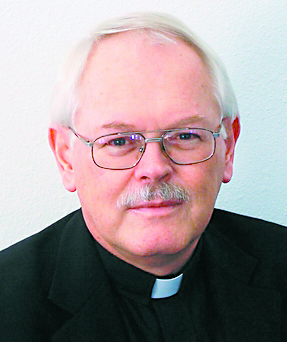IN EXILE
By Father Ron Rolheiser, OMI
Recently NASA launched the James Webb Space Telescope into space, the biggest and most expensive telescope ever built. It will take six months for it to travel a million miles from the earth, find its permanent place in space, and then start transmitting pictures back to earth. Those pictures will be such as have never seen before. The hope is that it will enable us to see much further into space than we’ve ever seen before, ideally to the very ends of our still expanding universe, right to the first particles that issued forth from the original explosion, the Big Bang, that began time and our universe.
Scientists estimate that our universe began 13.7 billion years ago. As far as we know, prior to that there was nothing in existence, as we understand that today (except for God). Then, out of this seeming nothingness, there was an explosion (the Big Bang) out of which everything in the universe including our planet earth formed. As with any explosion, the parts that were the most intimately intertwined with the expelling force are those driven furthest away. Thus, when investigators try to determine the cause of an explosion they are particularly interested in finding and examining those pieces that were most closely tied to the original force of the explosion, and generally those pieces have been blown furthest away.

The force of the Big Bang is still going on and those parts of our universe that were most intimately intertwined with its beginnings are still being driven further and further into space. Scientists are investigators, probing that original explosion. What the James Webb Space Telescope hopes to see is some of the original parts from that unimaginable explosion that gave birth to our universe because these parts were there at the very beginning, at the origins of everything that exists. By seeing and examining them, science hopes to better understand the origins of our universe.
Looking at the excitement scientists feel around this new telescope and their hopes that it will show us pictures of particles from the beginning of time, can help us understand why the Evangelist, John, has trouble restraining his enthusiasm when he talks about Jesus in his first Epistle. He is excited about Jesus because, among other things, Jesus was there at the beginnings of the universe and indeed at the beginnings of everything. For John, Jesus is a mystical telescope through which we might view that primordial explosion that created the universe, since he was there when it happened.
Let me risk paraphrasing the beginning of the First Epistle of John (1:1-4) as he might have written it for our generation vis-a-vis our curiosity about the origins of our universe:
You need to understand of whom and what I am speaking:
Jesus wasn’t just some extraordinary person who performed a few miracles or even who rose from the dead.
We are speaking of someone who was there at the very origins of creation, who himself is the foundation for that creation, who was with God when “the Big Bang” occurred, and even before that.
Incredibly, we actually got to see him in the flesh, with human eyes, the God who created “the Big Bang,” walking among us!
We actually touched him bodily.
We actually spoke with him and listened to him speak, he who was there at the origins of our universe, there when “the Big Bang” took place!
Indeed, he is the One who pulled the switch to set it off, with a plan in mind as to where it should go, a plan that includes us.
Do you want to probe more deeply into what happened at our origins?
Well, Jesus is a mystical telescope to look through.
After all, he was there at the beginning and unbelievably we got to see, hear, and touch him bodily!
Excuse my exuberance, but we got to walk and talk with someone who was there at the beginning of time.
There are different kinds of knowledge and different kinds of wisdom, along with different avenues for accessing each of them. Science is one of those avenues, an important one. For far too long theology and religion did not consider it a friend. That was (and remains) a tragic mistake since science has the same founder and same intent as theology and religion. Theology and religion have been wrong whenever they have sought to undercut science’s importance or its claims to truth. Sadly, science has often returned the favor and viewed theology and religion as a foe rather than as a colleague. The two need each other, not least in understanding the origins and intent of our universe.
How do we understand the origins and intent of our universe? Science and Jesus. Science is probing those origins in the interest of telling us how it happened and how it is unfolding, while Jesus (who was there when it happened) is more interested in telling us why it happened and what it means.
(Oblate Father Ron Rolheiser is a theologian, teacher and award-winning author. He can be contacted through his website www.ronrolheiser.com.)
